|
87. Hipparchia statilinus (Hufnagel, 1766) / Tree grayling / Nymphalidae – Satyrinae
NL: kleine heidevlinder / D: Kleiner Rostbinde, Eisenfarbiger Samtfalter / F: le fauna
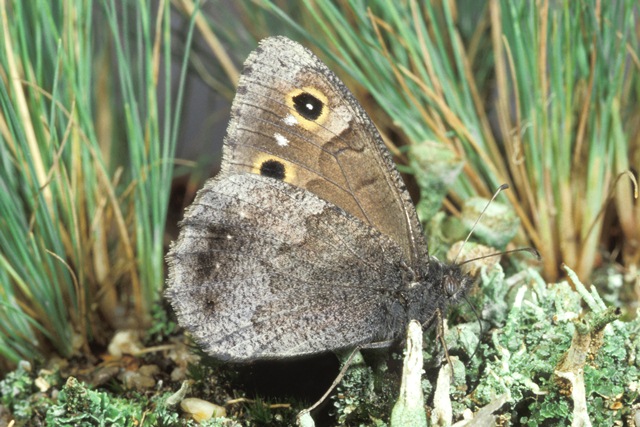  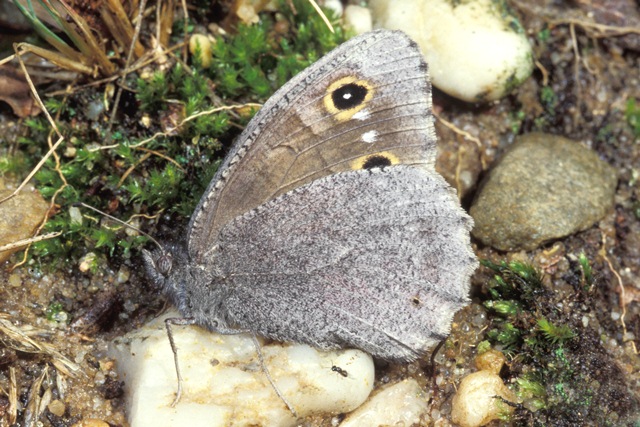
Photographs: Frits Bink ©.
Medium-sized, wing length 23 (21-25) mm. Occurs in the Benelux only at the southern part of the Veluwe in the 700 ha drift sand Kootwijkerzand. In former days also in Limburg, Belgium.
Butterfly is on the wing from mid-August until mid-September, it peaks end-August. The species is known from sub-continental to continental climates, amplitude 7 to 16. Required heat sum 800°d and maximum tolerated 2600°d, corresponding climate windows 25 to 44 weeks.
In Poland it occurs in old costal dunes of the Baltic Sea and in the east of Germany in heathland on very poor sandy soils.
Ecological characteristics
Behaviour over time
Overwintering: newly hatched or young larvae in first instar, 2 mm in length, hidden in tussock of its host-plant.
Reproduction: oviposition starts after 5-8 days when the body contains 63 (42-84) eggs, estimated production twice as much.
Larval feeding periods: some feeding before the winter, in mid-winter the larvae are green in colour indicating that there is some food in the gut, in next spring and summer 120 (99-138) days from end-February until early-July.
Generations: one.
Spreading of risk: variability in pupal developing time.
Life cycle: egg about 19 days, larva 40-44 weeks, pupa 32 (21-46) days.
Life span of adult: rather long, 3 weeks.
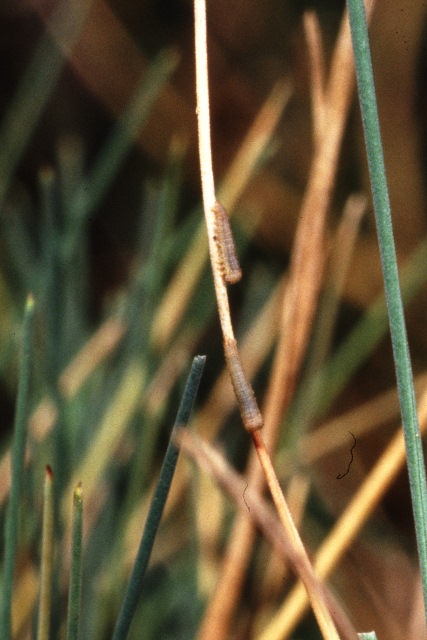 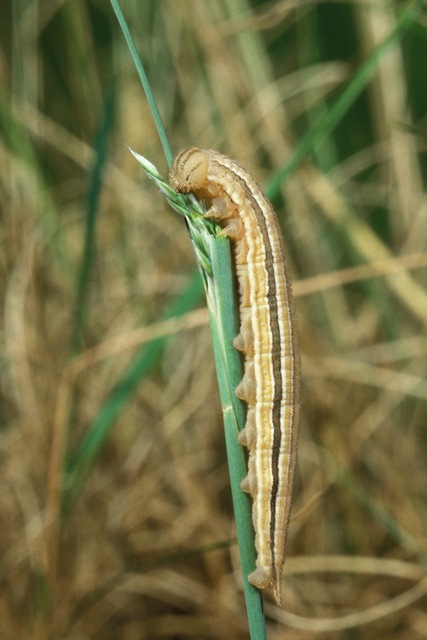
Photographs: Frits Bink ©.
Behaviour in space
From stay-at-home to migrant: stay-at-home, spatial requirement modest.
Finding a mate: male patrols, perches sometimes.
Orientation in the landscape: open field with short grass and patches of bare soil.
Oviposition: on wilted stems of a grass tussock.
Defence
Threats from other organisms: avoiding predators by cryptic colours and behaviour.
Threats from the environment: endure heat and drought quite well.
Feeding habits
Adult: nectar and honeydew, frequently nectaring on ling (Calluna vulgaris).
Larva: bask in spring but rather nocturnal in summer.
Larval foodplants
Plant species: Poaceae, mainly Corynephorus canescens, Festuca ovina, in captivity the larvae accept many other grass species.
Journal
Rearing experiment based on specimen from Barjac, Gard, France:
12 September 1980: female captured.
15 October: eggs hatched synchronously.
Overwintered outdoors.
24 January 1981: taken indoors.
18 February: larvae active.
1 April: larvae changed colour, from brown to green.
19 April: larvae 8-9 mm in length.
9 May: larvae 9-10 mm, light green in colour with brown-red lateral stripes.
1 June: biggest larva in last instar.
5 June: larvae brownish in colour.
21 June: two prepupae in cocoons, two cm deep in the soil.
26 June: pupated.
7 August: adult butterflies appeared.
Breeding experiment based on specimens from national park Hoge Veluwe, Netherlands:
30 August 1985: two pairs in copula collected.
3 September: first eggs laid on the muslin of the cage.
22 September: larvae hatched and ate their egg shells. Egg stage 3-22 September = 19 days.
20 October: some larvae had eaten, green substance in the gut.
11 December: all larvae in mid L1 and green in colour.
Overwintered outdoors.
8 March 1986: taken indoors.
9 March: larvae at end of first instar and were all feeding.
23 March: moulted L1-2.
4 April: 19 larvae, L2, mid and end.
19 April: two larvae L2, seven in moult L2-3, ten in L3.
27 April: in moult L3-4.
3 May: most larvae L4.
21 May: three L4, twelve L4-5, four L5. Larvae ate also Deschampsia cespitosa, Carex pilulifera.
17 June: four larvae burrowed into the soil.
21 June: four larvae still feeding, four pre-pupae, three pupa, one larva eating flower spikelet of Corynephorus canescens in full sunshine.
1 July: last larva pupated.
12 July: first adult appeared, male (pupal stage, from 21-6 until 12-7 = 21 days).
17 July: second butterfly, female (pupal stage 21-6 until 17-7 = 26 days).
20 July: third adult appeared, female.
28 July: female hatched 28-7 started egg laying, so pre-oviposition period was 8 days.
31 July: last two pupae hatched simultaneous (pupal stage 1-7 until 31-7 = 30-32 days).
10 August: eggs laid on 28-7 hatched (egg stage lasted from 28-7 until 10-8 = 13 days).
8 October: no larval feeding activity observed.
14 November: larvae green in colour, mid L1.
Overwintered outdoors.
10 March 87: larvae mid L1.
25 March: larvae moulted L1-2.
Table 87-1. Results of dissections

Table 87-1a. Sequential dissections of females from Hoge Veluwe, 1984

Table 87-2. Collection and observation localities
F, Aurel, 400 m, 44° 43’N – 5° 16’E; 29 August 1984, 2 September 1984.
F, Averdon 47° 39’ 38”N – 1° 17’ 23”E; 30 August 1982, 3 September 1982.
F, Barjac 44° 16’ 08”N – 4° 22’ 01”E; 12 September 1980.
NL, Hoge Veluwe 52° 05’N – 5° 51’E; 28 August 1981, 3 September 1984.
NL, Hoge Veluwe 52° 04’ 47”N – 5° 49’ 47”E; 24 August 1985, 27 August 1985, 30 August 1985, 7 September 1985.
NL, Kootwijkerzand 52° 09’ 58”N – 5° 46’ 29”E; 21 August 2011, 28 August 2011.
NL, Planken Wambuis 52° 03’ 24”N – 5° 47’ 45”E; 28 August 1981.
Fig. 87-1. Hipparchia statilinus, phenogram adapted from Bos et al. 2006: 240.

Fig. 87-2. Hipparchia statilinus, habitat characteristics.
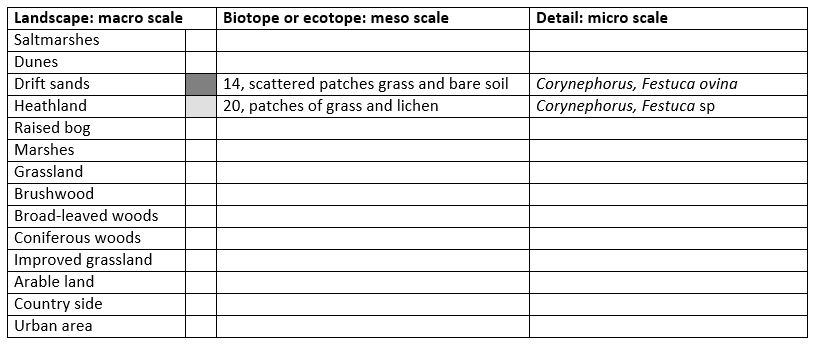
Fig. 87-3. Hipparchia statilinus, climate matrix, heat-sums 800 - 2600°d.
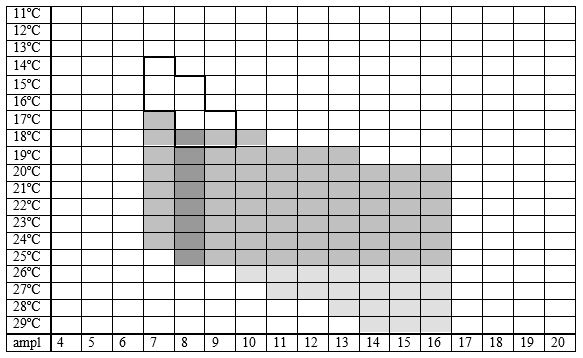
|











